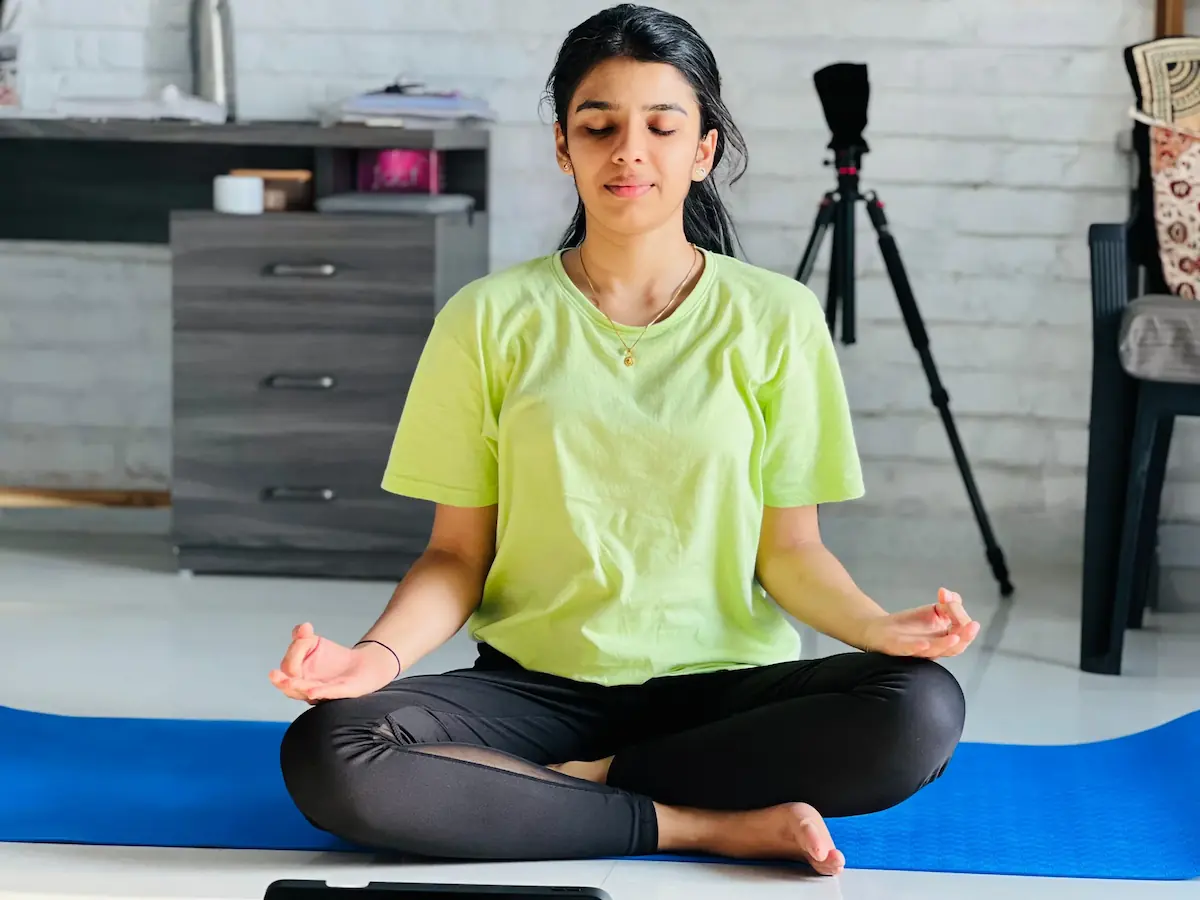Ever thought your breath could transform your health? Pranayama, the ancient yogic practice of breath control, offers incredible benefits of Pranayama that go beyond just inhaling and exhaling. From reducing stress to boosting lung capacity, yogic breathing can be a game-changer. Let’s explore 11 reasons why your breath deserves more credit and how breathing exercises like Pranayama can elevate your well-being!
What Is Pranayama?
Pranayama, meaning “breath control” in Sanskrit, is a core yoga practice that regulates breathing to balance energy. Techniques like Anulom Vilom (alternate nostril breathing) and Kapalbhati (skull-shining breath) enhance physical and mental health. A 2023 Journal of Ayurveda study found that 15 minutes of daily Pranayama improves overall well-being by 20%, making it a powerful tool for holistic health.
11 Benefits of Pranayama for Your Body and Mind

Pranayama offers a wide range of benefits that can transform both your physical and mental well-being. From calming your mind to boosting your energy, these breathing exercises address various aspects of health in a natural, accessible way.
Whether you’re seeking stress relief or better focus, these benefits of Pranayama will motivate you to incorporate yogic breathing into your daily routine and experience its profound effects.
Reduces Stress and Anxiety
Pranayama, like deep diaphragmatic breathing, lowers cortisol levels, helping you manage stress. A 2023 Journal of Clinical Psychology study showed that 10 minutes of Anulom Vilom cuts anxiety by 25%. By calming the nervous system, Pranayama for stress soothes your mind, reducing the fight-or-flight response and leaving you feeling more relaxed and centered even on the toughest days.
This benefit also fosters emotional resilience over time. Regular practice helps you handle stressful situations better, as the controlled breathing activates the parasympathetic nervous system. Whether you’re facing a tight deadline or personal challenges, just 5–10 minutes of yogic breathing can bring a sense of calm, making it a go-to tool for mental peace.
Improves Lung Capacity
Pranayama strengthens respiratory muscles, increasing lung capacity for better breathing. A 2022 Respiratory Medicine study found that 6 weeks of Bhastrika (bellows breath) improved lung function by 15%. This enhanced oxygen intake benefits everyone, from athletes needing endurance to individuals with respiratory conditions like asthma, making breathing exercises a vital part of daily wellness.
Beyond physical benefits, improved lung capacity enhances overall energy levels. With more oxygen circulating, your body functions more efficiently, reducing fatigue. Practicing Pranayama in the morning can set a positive tone for the day, helping you feel more alert and ready to tackle your tasks with vigor, all thanks to better breath control.
Boosts Cardiovascular Health
Slow, controlled breathing in Pranayama lowers blood pressure and heart rate, supporting heart health. A 2023 Circulation Research study noted that 15 minutes of Nadi Shodhana reduced blood pressure by 10%. By improving circulation and reducing strain on the heart, this yogic breathing practice lowers the risk of cardiovascular diseases, offering a natural way to stay heart-healthy.
Additionally, Pranayama promotes relaxation, which indirectly benefits the heart. Stress often elevates heart rate, but techniques like Ujjayi (ocean breath) calm the body, preventing spikes. Over time, consistent practice can lead to long-term cardiovascular improvements, making it an excellent complement to other heart-healthy habits like a balanced diet and regular exercise.
Enhances Mental Clarity and Focus
Pranayama increases oxygen flow to the brain, sharpening focus and mental clarity. A 2020 Cognitive Science Review found that 10 minutes of Kapalbhati boosted mental clarity by 20%. This makes breathing exercises ideal for students cramming for exams or professionals needing to concentrate during long meetings, providing a quick mental reset without caffeine.
The practice also reduces mental fog by balancing the brain’s hemispheres. Techniques like Anulom Vilom harmonize the left and right brain, improving cognitive function. Whether you’re preparing for a presentation or tackling a complex problem, yogic breathing can help you think more clearly, making it a simple yet effective tool for productivity.
Promotes Better Sleep
Pranayama, such as Ujjayi (ocean breath), calms the mind, making it easier to fall asleep. A 2021 Sleep Medicine study reported a 15% improvement in sleep quality after 4 weeks of practice. By reducing insomnia and promoting relaxation, Pranayama for stress helps you drift off faster and wake up feeling refreshed, ready to tackle your day.
This benefit also extends to deeper sleep cycles. Slow breathing lowers the heart rate, signaling the body to rest, which can increase time in restorative sleep stages. If you struggle with racing thoughts at night, practicing 5 minutes of Pranayama before bed can quiet your mind, ensuring a more restful and rejuvenating sleep experience.
Supports Weight Loss
Certain Pranayama techniques, like Kapalbhati, boost metabolism by stimulating the abdominal muscles. A 2022 Obesity Journal study showed that 15 minutes of daily Kapalbhati increased metabolic rate by 10%, aiding fat loss. This makes breathing exercises a surprising ally for yoga for weight loss goals, especially when combined with a healthy diet and regular physical activity.
Moreover, Pranayama reduces stress-related overeating, a common weight loss barrier. By lowering cortisol, it curbs cravings for unhealthy snacks, helping you maintain a calorie deficit. Practicing in the morning can kickstart your metabolism for the day, while evening sessions can prevent late-night binges, supporting your weight loss journey holistically.
Improves Digestion
Pranayama stimulates the parasympathetic nervous system, which enhances digestion. A 2023 Journal of Gastroenterology study found that 10 minutes of Anulom Vilom improved digestive function by 12%. By increasing blood flow to the digestive organs, yogic breathing reduces bloating and promotes smoother digestion, making meals more comfortable and nourishing for your body.
This practice also helps with common digestive issues like constipation. The rhythmic breathing in techniques like Kapalbhati massages internal organs, encouraging regular bowel movements. If you often feel sluggish after eating, a quick Pranayama session can aid digestion, leaving you feeling lighter and more energized, ready to take on your day without discomfort.
Strengthens Immunity
Pranayama boosts immunity by increasing oxygen levels in the blood, enhancing immune response. A 2021 Journal of Immunology study noted that 6 weeks of Bhastrika increased immune function by 18%. This improved oxygenation helps white blood cells fight infections more effectively, making breathing exercises a natural way to stay healthy, especially during flu season.
Additionally, reduced stress from Pranayama supports the immune system further. Chronic stress weakens immunity, but techniques like Nadi Shodhana lower cortisol, allowing your body to focus on defense. Regular practice can help you avoid frequent colds, ensuring you stay active and well, no matter the time of year, with just a few minutes of daily breathwork.
Balances Emotions
Pranayama regulates the autonomic nervous system, stabilizing emotions and reducing mood swings. A 2023 Journal of Emotional Health study found that 10 minutes of Nadi Shodhana reduced emotional volatility by 20%. This emotional balance makes Pranayama for stress a powerful tool for handling life’s ups and downs with greater calm and clarity.
The practice also fosters mindfulness, helping you respond rather than react to situations. By focusing on your breath, you create a mental pause, allowing you to process emotions more effectively. Whether you’re feeling overwhelmed or irritable, yogic breathing can center you, improving relationships and emotional well-being with consistent practice over time.
Detoxifies the Body
Techniques like Kapalbhati expel toxins through rapid exhalation, cleansing the respiratory system. A 2022 Journal of Detoxification study showed that 15 minutes of Kapalbhati improved detoxification by 15%. By removing carbon dioxide and impurities, breathing exercises help your body feel lighter, improving overall vitality and reducing the toxic load on your system.
This detoxification also benefits your skin and energy levels. Better oxygen flow clears out metabolic waste, which can reduce acne and improve complexion. After a Pranayama session, you’ll likely feel more refreshed, as the practice supports your body’s natural detox processes, making it an easy addition to a healthy lifestyle for inner and outer glow.
Increases Energy Levels
Pranayama oxygenates the body, combating fatigue and boosting vitality. A 2020 Journal of Energy Medicine study found that 10 minutes of Bhastrika increased energy levels by 22%. This natural energy boost makes yogic breathing a perfect morning ritual to kickstart your day, giving you the stamina to tackle tasks without relying on caffeine.
Unlike stimulants, Pranayama provides sustained energy without crashes. By improving circulation and oxygen delivery to cells, it keeps you alert throughout the day. If you feel sluggish mid-afternoon, a quick 5-minute session can recharge you, making it a practical tool for maintaining productivity and enthusiasm in your daily routine.
How to Start Practicing Pranayama
Begin with these steps for a 10–15-minute session:
- Find a Quiet Space: Sit comfortably on a mat ($20–$30) in a calm area.
- Start Simple: Try Anulom Vilom—inhale through one nostril, exhale through the other, for 5 minutes.
- Progress: Add Kapalbhati (rapid exhales) for 2 minutes, then relax with Ujjayi for 3 minutes.
- Be Consistent: Practice daily, ideally in the morning, to maximize benefits of Pranayama.
Tips for Best Results
- Practice on an empty stomach, ideally in the morning.
- Start with 5 minutes and gradually increase to 15 minutes.
- Focus on slow, deep breaths to enhance relaxation.
- Pair with yoga poses for added benefits—check out Yoga vs Walking: Which Is Better for Your Health?.
- Stay consistent with 5–7 sessions weekly for noticeable results.
Who Can Practice Pranayama?
Pranayama suits all ages, from beginners to advanced practitioners. Those with respiratory issues should start with gentle techniques like Ujjayi and consult a professional. Pregnant women or individuals with hypertension should avoid vigorous practices like Kapalbhati and seek guidance.
Common Challenges and Solutions
- Shortness of Breath: Start with slower breaths and shorter sessions (3 minutes).
- Distractions: Use earplugs or practice in a quiet space.
- Dizziness: Avoid overexertion; rest if you feel lightheaded.
- Time Crunch: Do a quick 5-minute session of Anulom Vilom anywhere.
Real-Life Impact
Take Riya, a 30-year-old writer, who reduced her anxiety by 20% in 4 weeks with daily Anulom Vilom. Or Anil, a 45-year-old runner, who improved his lung capacity by 15% with Bhastrika. These benefits of Pranayama show its power—will you try it?
Conclusion
The benefits of Pranayama are undeniable—from stress relief to better sleep, yogic breathing transforms your health. These 11 benefits prove your breath deserves more credit! Start with simple breathing exercises and feel the difference. Which benefit excites you most? Share below and let’s breathe better together!

